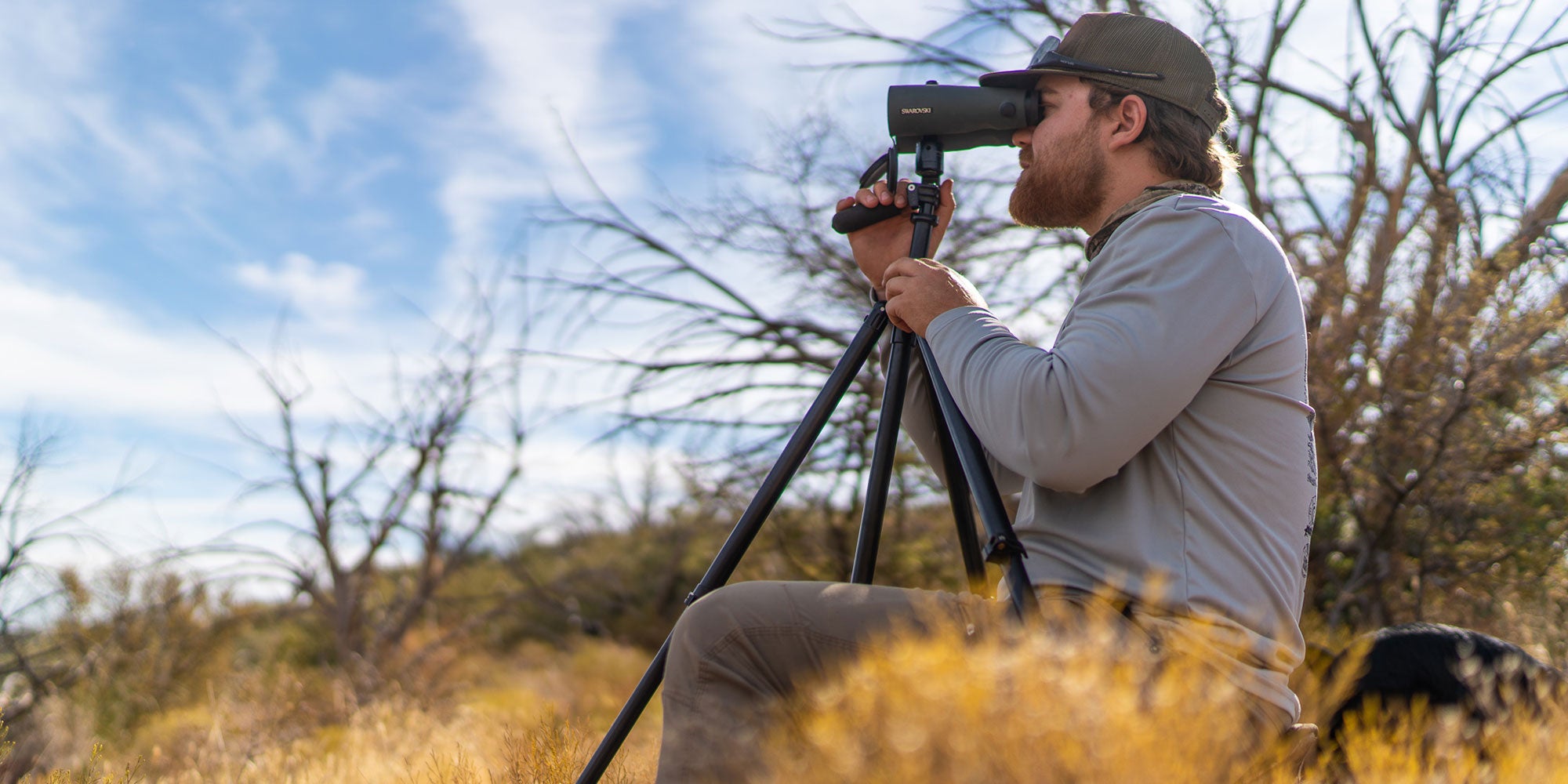on orders over $1,000
Glassing With a Tripod - Tips and Tricks
by Levi Sopeland
Watching a good glasser find game in difficult conditions from difficult angles is nothing short of a spectacle. There are some differences in tactics among these mystical hunters, but there are also some key common denominators. I have tried to take note of them and implement them on my own hunts.
I used to believe the regular success of most die-hard hunters was largely aided by access to higher-end gear. “I could spot that too if I had a pair of Swarovskis.” We’ve all had these thoughts at one point or another.
While quality optics do provide an advantage to a skilled hunter, in my experience, the best hunters I have encountered had different preferences when it came to the make/model of their binoculars, spotting scopes, and other gear. However, every great hunter/glasser/guide that I have EVER come across has one thing in common – they all mount their optics on a tripod.
Advantages of a Tripod
One of the most important differences between hand-holding and glassing is the amount of time you can spend doing it. If I try to freehand a pair of 12x binoculars, you can count me out after about 10 minutes without something to rest them on.
Conversely, I have spent many entire days, sunup to sundown, looking through binoculars that were mounted on a tripod. Better optics make that easier, but the tripod is the key.
Another subtle difference is the way that you can use your binoculars when you’re not concerned with holding them up. When freehanding, most people move their head and neck to aim the center of the optic at various targets. This can get tiresome and is drastically less effective than the alternative.
When your optics are firmly mounted on a tripod, you can glass from farther away and utilize a larger field of view. Your eyes are free to roam around the image without moving your head. You can spend half an hour scanning one spot before you have to pan or tilt. A good pan head or smooth ball head will make slight adjustments very easy and help alleviate any jerky movement.
Choosing a tripod head is an important step, and you want to make sure you get the right type for your glassing style and optics setup.
Also, without the subtle motions of your body, you can much more easily pick up small movements such as the flick of an ear or tail. Those things are nearly impossible to catch otherwise and are often the difference between finding game and getting skunked, especially with coues deer or mule deer in areas where they are not plentiful or in hot, sunny weather.
Even with a tripod, I often wonder how many deer I look over or miss because I wasn’t staring intently when they moved just slightly. Not having a tripod and being forced to freehand is now a recurring nightmare for me! A spotting scope is basically a paperweight without a tripod, so I wouldn’t bother having one without a solid platform for it.
Most tripods allow you to adjust the orientation of the leg sections to accommodate awkward terrain angles that hunters often encounter. A good center post extension can also give you more flexibility as far as positioning.
Tripods also make for excellent shooting rests. Paired with a Triclawps, the Outdoorsmans Shooting V, or Rifle Rest, it is easy to build a secure platform in unpredictable terrain.

Digiscoping
One of the greatest advantages of packing a tripod is the ability to record photos and video of what you see through your optics. With just an affordable (under $100) adapter system that usually includes a phone case, you can mount your cell phone camera on your optic and use it as an extreme telephoto lens.
Digiscoping has become one of the most important tools for guides and outfitters looking to offer trophy hunts to clients. It has also spread to the “enthusiast” side of the community and the setup is very simple. With the recent news involving trail cameras in Arizona, being able to keep track of and document game is more important than ever.
Besides the tactical advantages, my favorite benefit of digiscoping is never having to tell “big buck” stories without proof. I don’t regularly find myself looking at a buck worth bragging about, but as the great Shia Lebeuf once said, “Don’t let your dreams be dreams.”
There are many companies that make digiscoping adapters. Although I’m biased, I genuinely believe that Outdoorsmans makes the best ones for any phone paired with any optic.
Bottom Line: Get a Tripod
Although I work for a glassing tripod manufacturer and I may get fired for saying this, this is the point I want to make. The most important thing is not what tripod you are using, but the fact that you are using one. Whether you choose an aluminum tripod, one that’s made of carbon fiber, or something new that we don’t even know about yet, you’ll be extremely happy you did.
If you are not already, find somewhere to buy or borrow one (I know where I’d go), and see just how much more success (and animals) you find while using it. Any binocular can be mounted on a tripod, and a cheaper optic on a good tripod is MUCH more valuable than the best optic on the market, handheld.
